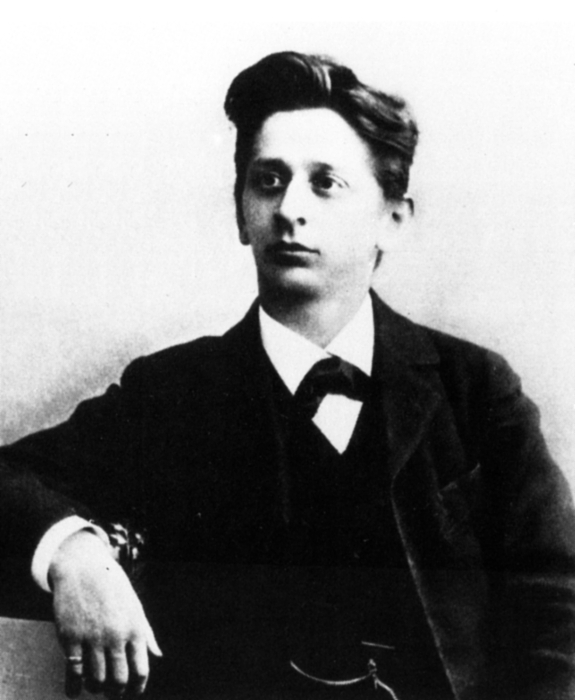Clarinet Trio (Zemlinsky) on:
[Wikipedia]
[Google]
[Amazon]
The Trio in
 The trio was Zemlinsky's submission to a composition competition offered by the Vienna ''Tonkünstlerverein'' to all Austro-Hungarian composers, that asked for a chamber music work scored with at least one
The trio was Zemlinsky's submission to a composition competition offered by the Vienna ''Tonkünstlerverein'' to all Austro-Hungarian composers, that asked for a chamber music work scored with at least one
D minor
D minor is a minor scale based on D, consisting of the pitches D, E, F, G, A, B, and C. Its key signature has one flat. Its relative major is F major and its parallel major is D major.
The D natural minor scale is:
Changes needed ...
for clarinet, cello and piano, Op. 3, was written by Alexander von Zemlinsky
Alexander Zemlinsky or Alexander von Zemlinsky (14 October 1871 – 15 March 1942) was an Austrian composer, conductor, and teacher.
Biography
Early life
Zemlinsky was born in Vienna to a highly diverse family. Zemlinsky's grandfather, Anton ...
in 1896. The composer also arranged the work for a standard piano trio
A piano trio is a group of piano and two other instruments, usually a violin and a cello, or a piece of music written for such a group. It is one of the most common forms found in European classical music, classical chamber music. The term can also ...
consisting of violin, cello and piano.
History
 The trio was Zemlinsky's submission to a composition competition offered by the Vienna ''Tonkünstlerverein'' to all Austro-Hungarian composers, that asked for a chamber music work scored with at least one
The trio was Zemlinsky's submission to a composition competition offered by the Vienna ''Tonkünstlerverein'' to all Austro-Hungarian composers, that asked for a chamber music work scored with at least one wind instrument
A wind instrument is a musical instrument that contains some type of resonator (usually a tube) in which a column of air is set into vibration by the player blowing into (or over) a mouthpiece set at or near the end of the resonator. The pitch ...
. It is likely that this requirement originated from Johannes Brahms
Johannes Brahms (; ; 7 May 1833 – 3 April 1897) was a German composer, virtuoso pianist, and conductor of the mid-Romantic period (music), Romantic period. His music is noted for its rhythmic vitality and freer treatment of dissonance, oft ...
, the president of the ''Verein'' and one of the competition's judges, who had taken a recent interest in the clarinet, with works such as the Clarinet Trio, Clarinet Quintet
Traditionally a clarinet quintet is a chamber musical ensemble made up of one clarinet, plus the standard string quartet of two violins, one viola, and one cello. Now the term clarinet quintet can refer to any combination of instruments in the c ...
, and the two Clarinet Sonatas.
As the competition's deadline was on 1 July, it is likely that the trio was composed in the first half of 1896. There is some evidence that the work started out as a standard piano trio
A piano trio is a group of piano and two other instruments, usually a violin and a cello, or a piece of music written for such a group. It is one of the most common forms found in European classical music, classical chamber music. The term can also ...
, and that Zemlinsky replaced the violin with the clarinet at some point to match the requirements of the competition. Published editions by Simrock and Henle Verlag include a violin part as an alternative to the clarinet.
The Clarinet Trio was premiered on 11 December 1896, after the jury made an initial selection of works. On 22 December 1896, Zemlinsky was awarded third prize, along with 200 kronen (). The work was published by Simrock the following year, following a recommendation by Brahms, who added "I can recommend the man as well as his talent".
The trio was dedicated to Johann Nepomuk Fuchs, who had been Zemlinsky's composition teacher at the Vienna Conservatory. The autograph manuscript has been lost, and only some initial sketches remain.
Structure
The work consists of threemovements
Movement may refer to:
Generic uses
* Movement (clockwork), the internal mechanism of a timepiece
* Movement (sign language), a hand movement when signing
* Motion, commonly referred to as movement
* Movement (music), a division of a larger c ...
:
The trio shows considerable influence of Brahms, and to some extent of Dvořák in its melodies. The playing time is around 29 minutes.
Reception
Marc Moskovitz writes that the trio "shows the depth of his potential, for the first time fusing his impressive understated lyrical gift with his mastery of the art of developing variation."References
External links
* {{authority control Compositions by Alexander von Zemlinsky Zemlinsky 1896 compositions Compositions in C minor Music dedicated to students or teachers